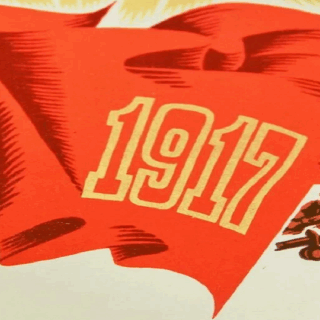
Chapter 1
“In the cold, in the cold
From familiar places
Others call us cities … “
V. Vysotsky
In 1854 under the muzzles of the guns, the American Commodore Matthew Perry forced the Japanese to sign the Treaty of Peace and Friendship with the United States and “open” to the world.

This event, like a house of cards, destroyed the usual 200-year course of life.
The description of the Meiji era is not within the scope of this article, but it should be noted that, for a number of reasons, socio-political problems have been brewing for a long time.
First, the degree of urbanization of Japan was at the level of the most developed European countries. Approximately 20% And everyone felt lighter in their hearts.”
Later, everyone was distributed to 10 isolated camps in Arizona, Arkansas, California, Colorado, Idaho, Utah and Wyoming.

Living conditions there were also more than meager. A family of 5-6 people huddled in a little room measuring 6.1×7.6 m, smaller rooms were allocated for small families. There were no walls, just thin partitions. There was nothing in the rooms but a few cots and a stove. For every 300-400 people, a toilet, a shower, and sinks for washing dishes were allocated.
The budget for food was a maximum of 45 cents a day, but in fact it came out to an average of 40 cents.

The Japanese were used in various jobs, including agricultural work (part of the harvest went to the food of the internees themselves), for the manufacture of camouflage nets for the army, etc. Wages ranged from $16 to $19 dollars per month.
Gradually, hospitals, post offices, schools, warehouses appeared … At first, there were no school supplies and equipment, teachers. Desks, bookshelves, maps and various books were made by ourselves, sometimes they were donated by representatives of churches and charitable services. Furnishings for the rooms – tables, chairs were also collected from the remnants of wood, scrap metal, etc.
Japan – originally was harsh, inhospitable: mountains, volcanoes, lack of land. The Japanese managed to turn this area into a flourishing, beautiful country. They managed to repeat this in the camps. They grew trees, made children’s and sports grounds. Life has become, if not good, then at least more comfortable. of the population lived in cities, which amounted to about 5,000,000 people.

Also, in a country that has long been living without external and internal wars, there were 350-400,000 samurai. Together with families – more than 2,000,000.
All these people did not have their own land, and they received their salary in rice. In addition, they needed hotels, restaurants, baths, brothels, theaters. This led to an extraordinary growth in the service sector. Thus, the unfortunate peasants were forced to feed the entire population. And although the productivity of peasant labor was quite high, it was a difficult time for them.
Overpopulation, lack of fertile land (55% of farms owned less than two acres of land, 2 million – 1.2 acres), one crop failure after another: In 1884, 1897, 1902, 1905, 1910 -m yrs. etc., i.e. every 3-5 years.
America, just now, because of the racism of the white population, having got rid of the Chinese, again needed cheap labor. Railways were built, coal mining developed, it was necessary to cultivate the land and work on sugar plantations.
Rumors about the attitude of whites towards Asians have not yet reached Japan, but a lot has been said about how easy it is to earn extra money in the USA. All this was very attractive, both for commoners and for many samurai who lost their places during the Meiji revolution.
Therefore, the first migrants went to America, mainly not to stay there forever, but to make capital. This is evident from the statistics. The first wave of immigrants (1890-1907) was 82% male and 17% female. For example, in 1900 there were five women for every 95 men. Thus, most of the families remained in Japan.
Meanwhile, the white population, somewhat relaxed after the expulsion of the Chinese, suddenly discovered that some people with slanted eyes again flooded into the country. Without making any distinction between nationalities, they were also called “Chinks”.
Riots began again and politicians, who felt that one could easily make a career out of this discontent, like Trump, proclaimed restrictions on immigration (albeit legal in this case) as one of the main points of their programs.
Theodore “Teddy” Roosevelt, who received the Nobel Peace Prize in 1906, is also known for the fact that a children’s toy, the Teddy Bear, is named after him. The fact is that once on a hunt, the president refused to shoot at a bear that had already been caught. Much less is remembered about his racism. As he promised his white voters, in 1907, Roosevelt entered into a “Gentlemen’s Agreement” with Japan, according to which the Land of the Rising Sun undertakes to suppress emigration, except in special cases. This greatly limited the number of people entering the country, well, it did not completely stop the influx of those who wanted to.
Then, in 1913, in California, and then, following its example, in other states, the so-called “Land Law” is introduced, which prohibits foreigners from owning land. In 1920, it was tightened even more and even rent was banned.
Becoming a citizen was almost impossible. In November 1922, in the case of Takao Ozawa v. United States, the court decided that the Japanese were not of the white race, and therefore could not become US citizens. In USA v. Bagat Sigha Tinda, the court defined “white” not as a person belonging to the Aryan race, but as a person “white in the conventional, not scientific, sense.”
All this greatly complicated life, especially for newly arrived immigrants. So, of those who came to the United States in 1910-1920. (87.576 people in total), 80% (70.404 people) returned home. Mostly women remained. Just during this period, single men from the first wave, having settled down enough in a new place, began to think about marriage. Since it was extremely difficult to find a Japanese wife in America, they turned to either their relatives for help to arrange an arranged marriage, or to catalogs with photographs of girls offering themselves as brides.
Seeing that in spite of everything the Japanese do not give up, and their number, albeit much more slowly, but continues to increase, the American government issues a new law in 1924, according to which entry from Japan to the United States is prohibited, and the quotas for all other immigrants. After that, only those who for some reason could not or did not want to return to their homeland remained in the country. By 1940, there were 126,948 Japanese in the continental United States and more than 150,000 people with Japanese roots.
They were divided into Issei – first-generation immigrants, Nisei – children born in the United States (and therefore received citizenship automatically), and, later, Sansei – children of Nisei.
Nisei themselves were divided into 1). Those who have never been to Japan and 2). Those who lived or studied in Japan for some time, although they were US citizens (they were called “kibei”). Why this division is important will become clear in what follows.
Chapter 2
War and camps
海行かば
水漬く屍
山行かば
草生す屍
大君の
辺にこそ死なめ
かへり見はせじ
(“If fate is for me to go to sea,
They will find my corpse in the water – a small grief.
Well, if they send you uphill,
Grass will grow in time.
Be that as it may, dying for the Emperor,
Let’s not look back, giving life.”)
Japanese war song “Umi yukaba” (“海行かば”)
On December 7, 1941, at 7:53 am, a radio signal arrived in Tokyo with the code word: “Tora, tora, tora.” This meant that surprise had been achieved and the attack had succeeded. It killed 2,403 and wounded 1,178 Americans. There were also casualties among the civilian population. Most were covered by “friendly fire”. 49 were killed (aged 3 months to 59 years) and 35 wounded. Among those killed were 24 people of Japanese origin, 12 children, and only 22 from the age of 21 or younger.
The USA entered the Second World War.
The very next day, December 8, immediately after the declaration of war on Japan, the FBI arrested 5,500 pre-selected Japanese. Despite this, excesses could not be avoided.
As we have seen, even before the attack, the attitude of the Americans towards the Japanese was rather bad. Now the hysteria has reached its peak. All Asians seemed to be spies, their every action was a betrayal. The newspapers went crazy.
Here is what the Los Angeles Times wrote at the time:
“A viper is always a viper, no matter where it hatches. And a Japanese American born to Japanese parents grows up a Japanese, but not an American”, “American farmers advocate the eviction of Japs in special zones. Farmers will grow the agricultural products that grown by the Japanese, and generally do not want them to return even after the end of the war”, “The Japanese transmit secret information from here to Tokyo”, “The Fifth Column on the coast”.
Politicians are not far behind.
“A good solution to the problem of the Japanese in Idaho – /and for our/ nation as well – would be to send them all back to Japan and then flood the island. They live like rats, breed like rats and act like rats. We don’t want so that they buy or rent land and stay permanently in our state.”
(From a newspaper account of Governor Chase Clark’s speech of Idaho, May 22, 1942.)
The first victim of all this hysteria was a 30-year-old Nisei who recently returned from the army. He was found stabbed to death in Los Angeles right on the sidewalk. Right on Christmas Day, several Japanese were beaten and one brutally beaten to death by Filipino marauders. During January, fury and violence swept across the United States. Despite the fact that the Secretary of the Navy, some governors, as well as the head of the FBI, John Edgar Hoover himself, believed that Japanese Americans did not pose a threat to America’s security, they failed to break popular opinion. There was even a special term: “physical espionage”. By this it was meant that the Japanese could spill the beans by chance and give away important secrets. At the same time, the existence of a “fifth column” in their ranks was not ruled out.
Rumors circulated one more terrible and more stupid than the other. There seemed to be a coded message in the linen hung outside. Japanese trucks carrying vegetables allegedly created traffic jams on purpose. Someone saw some kind of truck burst into the airfield and beat the tails of the bombers. Another is that the Japanese, hiding in a milk van, shot civilians from a machine gun. Etc. nonsense.
All this led to the fact that already on January 29, the Department of Justice began the eviction of the Japanese from the most important strategic areas. This calmed the Americans a little, but not much and not for long. On February 13, 1942, West Coast congressmen sent a letter to President Roosevelt demanding the immediate expulsion of all people with Japanese roots. On February 14, the commander of the Western Military District, Lieutenant General John Dewitt, sent a memorandum to the Secretary of War demanding the expulsion of all Japanese, whether citizens or non-citizens. He often said that “we must always be concerned about the Japanese until they are wiped off the face of the earth.”
As a result, on February 19, 1942, President Franklin D. Roosevelt signed Emergency Executive Order 9066, which authorized the US Secretary of War and the commanders of the US armed forces to designate certain areas of the United States of America as military zones, “from which all or some civilians may be removed “:
“… Considering that the successful conduct of a war requires all possible protection against espionage and sabotage … by this decree, I authorize and direct the Minister of War … to designate war zones in those places and to the extent that he deems it necessary. Of these, there may be removed any people or the entire population. The right of each person to stay in these zones is limited by the decision of the Minister of War. The Minister of War is obliged to provide the evicted residents with transport, food and housing as needed. ”
Over 11,000 German Americans (along with some Jewish ethnic refugees), 3,000 Italian Americans, and 120-121,000 Japanese were interned under this decree.
Chapter 3
Expulsion
“… In those days, secluded, now almost epic,
When the deadlines were huge, they wandered into long stages.
They were taken on the night of conception, and many even earlier,
But the brethren live – my honest company.
V. Vysotsky “The Ballad of Childhood”

Most people think very little about the future. Day after day passes, little changes in our lives, creating the impression that this will be the case, if not always, then for a very long time. We get used to this routine and do not notice (or do not want to notice) what is happening around. This is how people have always lived, and this is how people will continue to live. But this very “around” is cruel. It inexorably pulls us out of the familiar, like a weed from a garden bed, and throws us where we least expected … This happened in the distant military year of 1942.

On March 2, General DeWitt issued Proclamation No. 1 announcing that three states on the west coast, as well as parts of Arizona, were under martial law, specifically stipulating that all persons of Japanese descent be evicted from these areas. On March 18, President Roosevelt signed Emergency Executive Order No. 9102, which created the Military Relocation Office (hereinafter referred to as the MRO). Initially, all Japanese who had somewhere to go, or those who wanted to leave, were allowed to move inland. Approximately 8,000 people moved of their own accord. However, most of the settlers immediately stumbled upon many problems, the main of which was the same racism.

There were also those who themselves volunteered to move to the camp. As it turned out later, these were either poor people who had nothing to live on, or criminals hiding from the law. The latter quickly tidied up the “warm places” to their hands. They were in charge of kitchens, were cooks, foremen, etc. Those. the distribution of food and work came completely under their control. They even managed to infiltrate some of “their own” guards when the internal guards were later created.

Despite the fact that the barracks had not yet been completed, already on March 22 the first group of Japanese was sent to the Manzanar camp.
On March 23, General DeWitt issues Order No. 1, according to which all persons of Japanese origin are subject to “evacuation”, or simply to say, internment.
To collect, sell or lease property, land, houses, businesses, etc., it was given (in different places) from a couple of days to a week. Then, I had time – I didn’t have time, they hung tags on everyone and put them on the train … They were allowed to take only the most necessary things with them. Even pets had to be left behind.

At the same time, on March 27, it was decided to ban voluntary departure altogether, about half of those who had already left were found and placed in camps.
Initially, 16 “gathering centers” were created, some of which were located in the former stables, and the other part in unfinished barracks, where there were no windows and doors.

There were signals from Washington – everything is for the front, the “Japs” will manage.”
Why are there unfinished barracks … Often they came to an almost empty place. There were no basic things: toilets, plumbing, electricity, stoves. Food was cooked on an open fire, candle ends were used. All this in wooden buildings. The places of eviction were also not very pleasing: there was only desert or swamps around. The camps were surrounded by barbed wire and it was forbidden to leave them.

Artist Kango Takamura was one of the first evacuees to arrive at the Manzanar camp. He described what he saw as follows: “It was very hot and a strong wind was blowing. There was no shade at all. Very ominous, really. But a year later the situation changed. They built a camp with running water, greenery grew. And everyone felt lighter in their hearts.”
Later, everyone was distributed to 10 isolated camps in Arizona, Arkansas, California, Colorado, Idaho, Utah and Wyoming.

Living conditions there were also more than meager. A family of 5-6 people huddled in a little room measuring 6.1×7.6 m, smaller rooms were allocated for small families. There were no walls, just thin partitions. There was nothing in the rooms but a few cots and a stove. For every 300-400 people, a toilet, a shower, and sinks for washing dishes were allocated.
The budget for food was a maximum of 45 cents a day, but in fact it came out to an average of 40 cents.

The Japanese were used in various jobs, including agricultural work (part of the harvest went to the food of the internees themselves), for the manufacture of camouflage nets for the army, etc. Wages ranged from $16 to $19 dollars per month.
Gradually, hospitals, post offices, schools, warehouses appeared … At first, there were no school supplies and equipment, teachers. Desks, bookshelves, maps and various books were made by ourselves, sometimes they were donated by representatives of churches and charitable services. Furnishings for the rooms – tables, chairs were also collected from the remnants of wood, scrap metal, etc.
Japan – originally was harsh, inhospitable: mountains, volcanoes, lack of land. The Japanese managed to turn this area into a flourishing, beautiful country. They managed to repeat this in the camps. They grew trees, made children’s and sports grounds. Life has become, if not good, then at least more comfortable.
(To be continued)





